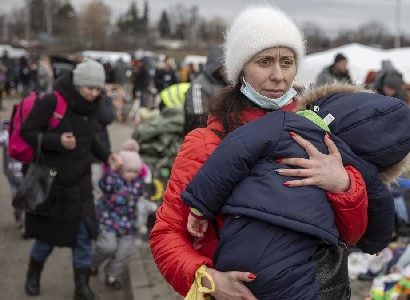Another story
Publish date 22-03-2023
 Despite everything, another type of story is possible. This is demonstrated by the year we have just left behind, which on TV, and more precisely in the generalist prime time newscasts, brought with it an extraordinarily journalistic story. different from what was the rage throughout the previous decade. It is a peculiarity that has manifested itself in the narration of a specific theme, that of immigration, but it is still a sign of the fact that even information can change one's habits, and change them for the better.
Despite everything, another type of story is possible. This is demonstrated by the year we have just left behind, which on TV, and more precisely in the generalist prime time newscasts, brought with it an extraordinarily journalistic story. different from what was the rage throughout the previous decade. It is a peculiarity that has manifested itself in the narration of a specific theme, that of immigration, but it is still a sign of the fact that even information can change one's habits, and change them for the better.
The data are those of the tenth report of the "Carta di Roma", News from the front, which monitored the coverage of the topic of migrations and found in 2022 a radical change of perspective with respect to the narrative of previous years. The story of the reception of Ukrainian refugees fleeing the war, in fact, has meant that the otherness generally associated with the figure of the migrant has freed itself of its threatening aspects, so that the feeling of commonality has replaced the amplification of differences. A benevolent representation/perception has been given to Ukrainian refugees, probably favored by their nature as temporary refugees, by their demographic composition, by a certain pre-existing familiarity towards them, even by sharing a common enemy and common goals.
The narrative construction mechanisms that have been grafted with regard to them are interesting: the starting context of the refugees, usually neglected in the services concerning migrants, has forcefully entered the story, has taken on its own narrative consistency, it gave perspective and depth to the figure of the migrant. The story of the migratory journey was not episodic, but had a narrative continuity: not fragmentary but organic, which allowed the public to familiarize themselves with the protagonists and to feel involved in their human story. The narration was strongly emotional, supportive, empathic, which favored identification and the absence of alarmist tones, usually typical of the migration story. No doubts have been raised about the reception machine and its ability to cope with numbers that, in other circumstances - and we have seen many - would have been considered unmanageable. The voices of Ukrainian refugees were the protagonists of the reports, people interviewed with a frequency never reserved for other situations.
In short, we have known a new way of narrating immigration which, however, does not seem to have had any effects on the representation of "other" migrants. After the slackening of attention on the issue of Ukrainian refugees, in fact, there have been signs by which information on immigration seems to have quickly settled back to its usual stylistic features: episodic nature, alarmism, controversial nature, weak attention paid to the contexts of arrival of migrants and their voices. There is still work to be done. But reality has shown that it can be done, that another approach is possible. If you've done it once, you can do it again.
Stefano Caredda
NP January 2023







